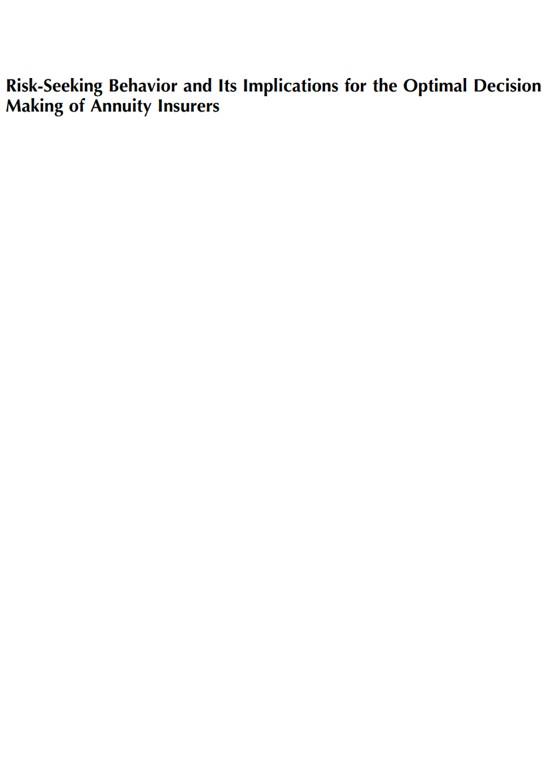returns below aspiration levels take more risks, whereas those with returns above reference levels decrease their risk-seeking, which supports the basic propositions of the cumulative prospect theory (CPT). Given initial evidence of mixed risk preferences in the L/A insurance industry, we derive an annuity insurer's optimal investment and business strategies in a CPT decision-making framework. We show that changing risk preferences considerably affect an annuity provider's decisions. We further illustrate how risk management changes an annuity insurer's optimal strategies. Our results suggest that risk management lowers downside risk and allows a loss-averse decision maker to assume more risk and achieve a higher level of utility
Risk-seeking behavior and its implications for the optimal decision making of annuity insurers

Contenido multimedia no disponible por derechos de autor o por acceso restringido. Contacte con la institución para más información.
returns below aspiration levels take more risks, whereas those with returns above reference levels decrease their risk-seeking, which supports the basic propositions of the cumulative prospect theory (CPT). Given initial evidence of mixed risk preferences in the L/A insurance industry, we derive an annuity insurer's optimal investment and business strategies in a CPT decision-making framework. We show that changing risk preferences considerably affect an annuity provider's decisions. We further illustrate how risk management changes an annuity insurer's optimal strategies. Our results suggest that risk management lowers downside risk and allows a loss-averse decision maker to assume more risk and achieve a higher level of utility

